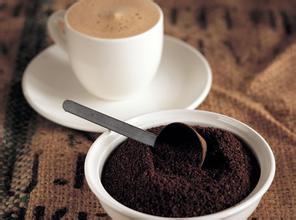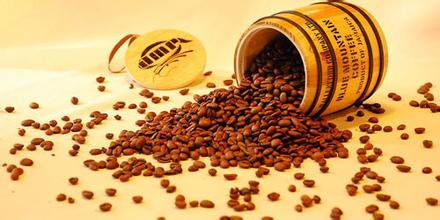Coffee planting and picking-Kenya Coffee picking season
Coffee planting and picking-Kenya Coffee picking season
This method is to hit the ripe fruit or shake the coffee branch with a random stick, so that the fruit falls and accumulates into a pile. Larger estates use large harvesters, while small and medium-sized farms harvest with a sea of people mobilized by the whole family. This method of shaking the fruit off the ground is easier to mix with impurities and defective beans than the hand-picking method, and beans from some places can be stained with a strange smell or fermented because the ground is wet. Producers of Robusta coffee beans such as Brazil and Ethiopia are mostly harvested in this way.
The washing method is also called wet treatment: after the outer pulp of the coffee fruit is removed by the pulp separator within 12 hours after the coffee is picked, the coffee beans are soaked in a large cement tank filled with water to separate the fruit. The coffee beans are then pasted in the fermentation box for about 12-36 hours, containing 15% water after fermentation, and the fermented coffee beans are washed clean with clean water. The coffee beans are dried in a dryer or dried in the sun, and the coffee beans are called "parchment coffee beans", waiting for export.
Fresh fruit-soak soft-remove exocarp-ferment the coffee fruit with pulp in the fermentation tank-rinse the pulp gum with water-dry the coffee fruit with endocarp-remove the endocarp with a peeling machine-polish the seed coat-coffee raw beans
Advantages: coffee beans have stable quality, beautiful color and less impurities
Disadvantages: the processing cost is too high and requires a lot of water.
As far as picking itself is concerned, there are two ways: one is picking in pieces, also known as peeling, that is, picking all the beans after a trip in the garden, and picking in slices is divided into manual picking and mechanical picking; the other is selective picking, which is called selective picking, that is, walking between trees a few times and only picking ripe red berries at intervals of 10 days. Picking method is more expensive and labor-intensive than peeling method. It is generally only used for Arabica seeds, especially those Arabica beans that need to be washed. The number of coffee beans picked depends on a variety of factors, the most obvious being the height of the trees and the layout of the farm or plantation. The average farm can pick an average of 50 kilograms per picker a day. But only 20% of these weights are real coffee beans, so the average picker can only pick 10Mel 20 kilograms of coffee beans. The coffee beans are packed in a bag with a standard weight of 45ml and 60kg. As a result, it takes a worker six days to fill a bag.

Important Notice :
前街咖啡 FrontStreet Coffee has moved to new addredd:
FrontStreet Coffee Address: 315,Donghua East Road,GuangZhou
Tel:020 38364473
- Prev

Golden Manning Coffee Flavor description Grinding scale production area Variety treatment Manor
Golden Manning Coffee Flavor description Grinding scale production area Variety treatment Manor traditional roaster is drum type, this roasting method has the characteristics of stew, which will make the coffee bean flavor more mature and taste fuller. The household drum roaster can bake half a pound of coffee beans at a time, and the baking time (including cooling and producing beans) takes about 2125 minutes. If you want to roast deeply.
- Next

Coffee mill thickness difference shelf life flavor description taste treatment variety
Coffee grinding thickness different shelf life flavor description taste treatment variety if you use a graduated coffee cup, that's great. But you still need to measure the total weight of the coffee to better determine whether the grinder needs to be readjusted. If you use an automatic divider, the total weight of the coffee you make will have an error of about 3G. Because the scale on the cup can help you.
Related
- What brand of black coffee is the most authentic and delicious? what are the characteristics of the flavor of the authentic Rose Summer Black Coffee?
- Introduction to the principle and characteristics of the correct use of mocha pot A detailed course of mocha pot brewing coffee is described in five steps.
- Which is better, decaf or regular coffee? how is decaf made?
- How much is a bag of four cat coffee?
- How about four Cat Coffee or Nestle Coffee? why is it a cheap scam?
- Which is better, Yunnan four Cats Coffee or Nestle Coffee? How about cat coffee? is it a fake scam? why is it so cheap?
- How about Cat Coffee? what grade is a hoax? which instant coffee tastes better, four Cat Coffee, Nestle Coffee or G7 coffee?
- Process flow chart of coffee making-Starbucks coffee making process what coffee tastes good at Starbucks
- The top ten best coffee beans in the world Rose summer coffee or Tanzanian coffee tastes good
- Yunnan four cat coffee is good to drink?_four cat coffee is a big brand? four cat blue mountain coffee is fake?

